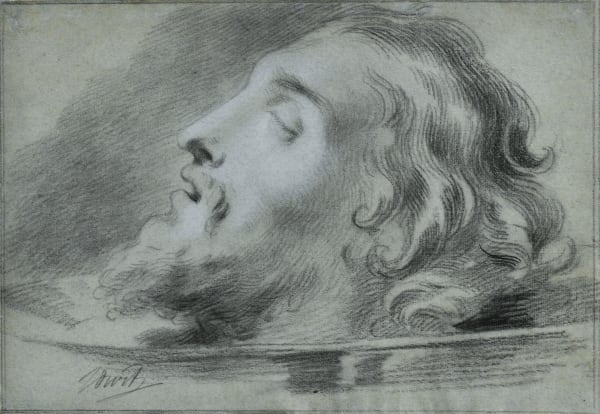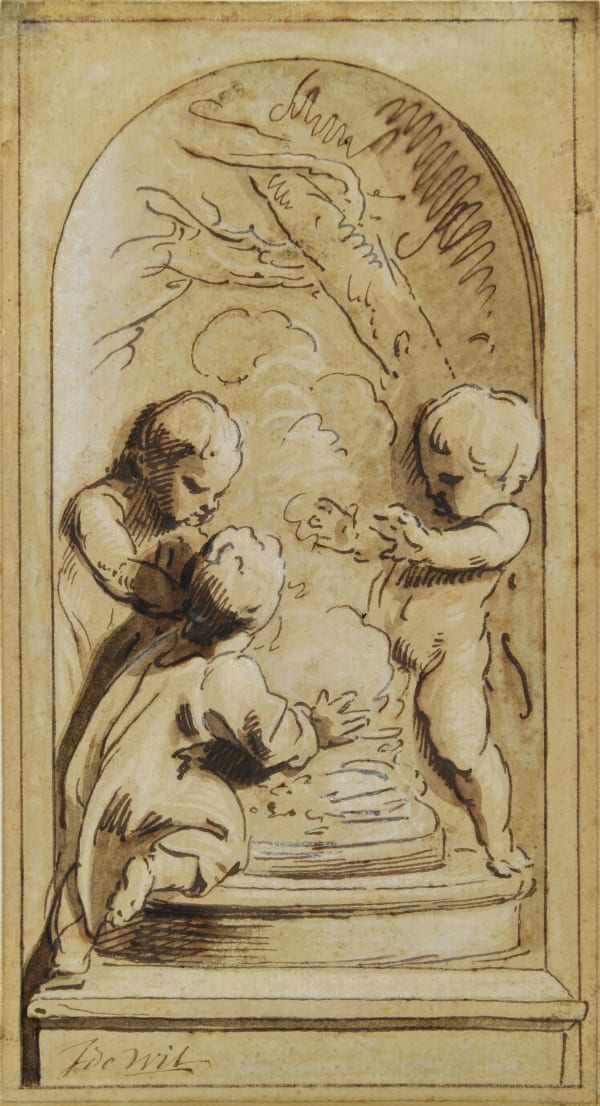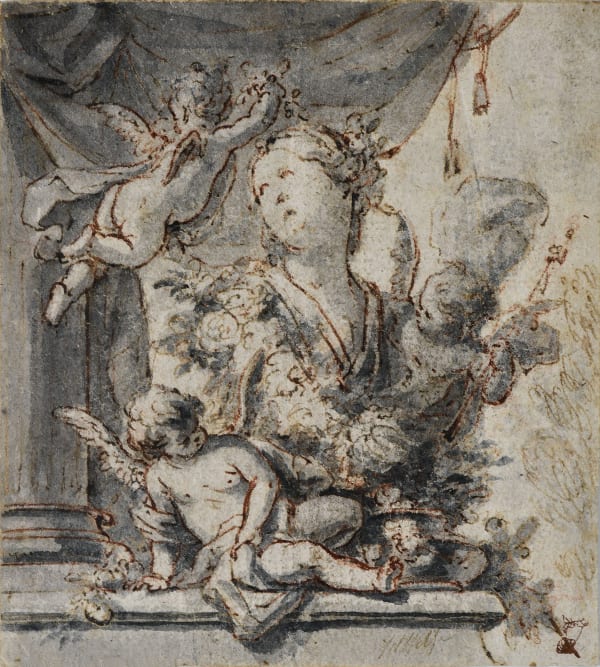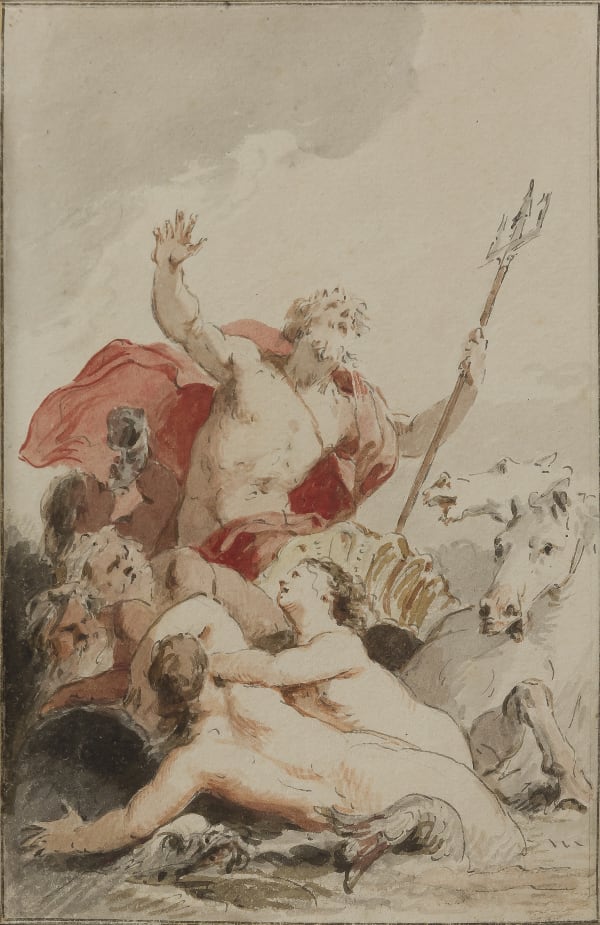Jacob de Wit (Amsterdam 1695 - 1754)
Jacob de Wit was born in Amsterdam in 1695. He received his first training, with the painter Albert Spiers, at the early age of nine. When he was thirteen, he went to Antwerp to study at the Academy. He became a pupil of Jacob van Hal, and went on to become a member of the guild of St Luke in 1714. While in Antwerp, he also produced a series of watercolour sketches of the ceilings decorated by Rubens in the Jesuit St Carolus Borromeus Church. As the church was struck by lightning a few years later and the ceilings were lost in the fire, these works, which were later engraved, became important historical documents. The work and style of Rubens – especially his cycle for the Borromeus church – were to leave a lasting impression on de Wit.
In 1715, de Wit returned to Amsterdam, where he became a much sought after artist for his decorative paintings on walls, doors and ceilings. Wealthy patrons who lived on the grachten in Amsterdam commissioned decorations from him. As many of them also had country houses, de Wit did a lot of work in neighbouring Haarlem and Vecht as well. De Wit was a great illusionistic painter who often worked in grisaille.
De Wit produced a great number of sketches and drawings for his projects; many are kept in major institutional and private collections today. The present very early work – most probably done when the artist was still in Antwerp – depicts the story of Mucius "The Lefthanded" Scaevola before Porsenna. When the Romans were at war with the Etrurian city of Clusium in 508BC, a yound Roman had volunteered to sneak into the enemy camp to murder their king, Porsenna. Captured during his nightly endeavour and led to the king, he said "I am Gaius Mucius, a citizen of Rome. I came here as an enemy to kill my enemy, and I am as ready to die as I am to kill. We Romans act bravely and, when adversity strikes, we suffer bravely."
"Watch", he went on, "so that you know how cheap the body is to men who have their eye on great glory." Upon saying this, he thrust his right hand into the sacrificial fire, without giving as much as a squeak. Porsenna was duly impressed and sent him home, saying he could go back, "as you do more harm to yourself than me." The story became very popular, as it illustrated the quintessentially Roman virtue of "virtus" beautifully and became a symbol of the courage and strength of the Roman military.
Provenance
Private collection, Antwerp.
- X
- Tumblr
-
 Jacob de Wit (Amsterdam 1695 - 1754)The Head of St John the Baptistblack chalk and white highlights on blue laid paper295 x 420 mmsigned 'Jdwit', bottom left
Jacob de Wit (Amsterdam 1695 - 1754)The Head of St John the Baptistblack chalk and white highlights on blue laid paper295 x 420 mmsigned 'Jdwit', bottom left -
 Jacob de Wit (Amsterdam 1695 - 1754)An Allegory of Winterpen and brown ink, brush and wash on laid paper235 x 130 mmsigned 'JdeWit', bottom left
Jacob de Wit (Amsterdam 1695 - 1754)An Allegory of Winterpen and brown ink, brush and wash on laid paper235 x 130 mmsigned 'JdeWit', bottom left -
 Jacob de Wit (Amsterdam 1695 - 1754)A Preparatory Drawing for 'Liefde Triompheert'pen and ink, brush and wash on laid paper120 x 110 mmsigned 'JdWit fe', lower right
Jacob de Wit (Amsterdam 1695 - 1754)A Preparatory Drawing for 'Liefde Triompheert'pen and ink, brush and wash on laid paper120 x 110 mmsigned 'JdWit fe', lower right -
 Jacob de Wit (Amsterdam 1695 - 1754)Neptune; Ceres, Cybele and Abundance (2)watercolour over pen and brown ink on laid paper175 x 113 mm (each)
Jacob de Wit (Amsterdam 1695 - 1754)Neptune; Ceres, Cybele and Abundance (2)watercolour over pen and brown ink on laid paper175 x 113 mm (each)






